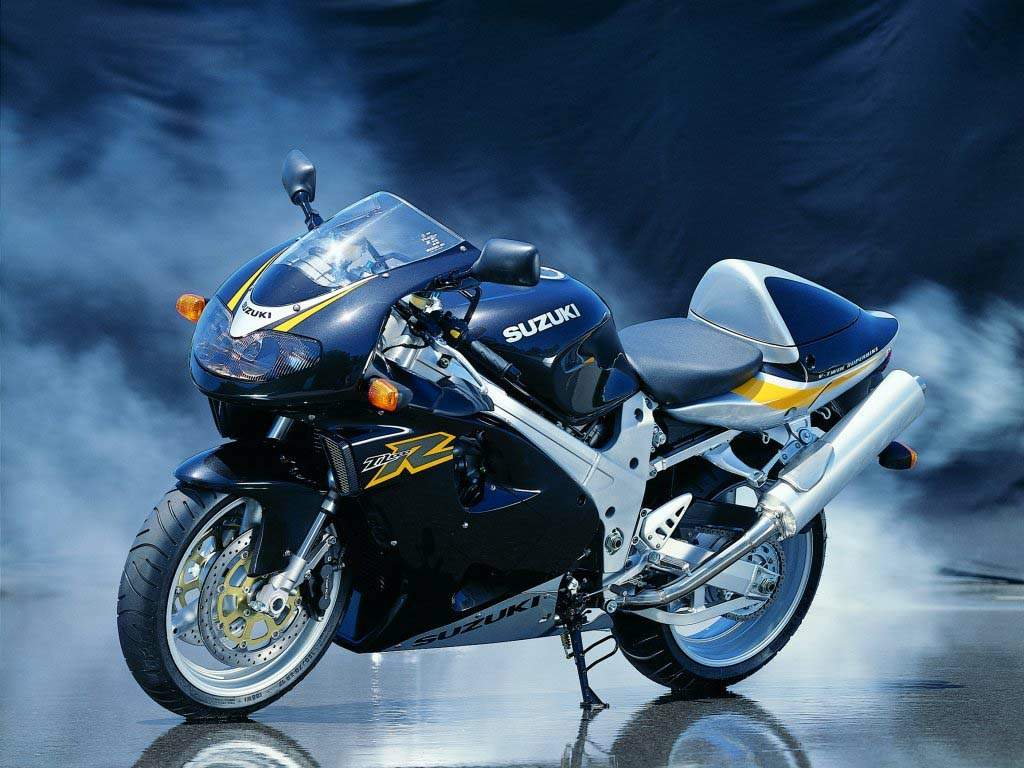
|
|
|
|
|
|
Classic Bikes
Custom Bikes
Individual
Racing Bikes AJP
AJS
Aprilia
Ariel
Avinton / Wakan
Bajaj
Benelli
Beta
Bimota
BMW
Brough Superior
BRP Cam-Am
BSA
Buell / EBR
Bultaco
Cagiva
Campagna
CCM
CF Moto
Combat Motors
Derbi
Deus
Ducati
Excelsior
GASGAS
Ghezzi Brian
Gilera
GIMA
Harley Davidson
Hero
Highland
Honda
Horex
Husaberg
Husqvarna
Hyosung
Indian
Jawa
Kawasaki
KTM
KYMCO
Laverda
Lazareth
Magni
Maico
Mash
Matchless
Mondial
Moto Guzzi
Moto Morini
MV Agusta
MZ / MuZ
NCR
Norton
NSU
Paton
Peugeot
Piaggio
Revival Cycles
Roland Sands
Royal Enfield
Sachs
Sherco
Sunbeam
Suzuki
SWM
SYM
Triumph
TVS
Ural
Velocette
Vespa
Victory
Vincent
VOR
Voxan
Vyrus
Walt Siegl
Walz
Wrenchmonkees
Wunderlich
XTR / Radical
Yamaha
Zero
Video
Technical
Complete Manufacturer List
|
Suzuki TL 1000R
The TL1000R was Suzuki's second attempt at creating a V-twin powered superbike. The TL-R used an updated version of the TL1000S engine, but fitted in a supersports-style track-oriented chassis rather than the half-faired roadbike chassis of the TL-S.
The TL-R has very striking styling - a wide single headlamp fairing incorporates a pair of aggressive ram-air intakes before swooping back in an aerodynamic curve round the aluminium twin-spar frame. The seat unit has a large aerodynamic duck-tail fin, designed to reattach the airflow from the back of the rider, improving highspeed performance.
Under its smooth clothes, the TL-R is a high-specification sports machine. Its engine is the same eight-valve 90o V-twin as fitted to the TL1000S, but with some re-tuning to produce more top-end muscle. It delivers smoother, more linear power than the torquey TL1000S engine, thanks to fuel-injection and timing changes. But it was the chassis that received most attention from Suzuki's engineers. The TL1000S suffered criticism for its lively handling, and the TL-R is a much more stable ride on the road. A steering damper is fitted as standard, to reduce any tendency for the steering to flap about under hard acceleration, although the revised steering geometry and heavier weight of the TL-R had already added extra stability over the TL1000S design.
The TL-R keeps the same unusual rear suspension system as the TL-S though. The rear spring is mounted separately from the damper unit, and the damper is a unique 'rotary' design. Rather than a conventional linear damper, which pushes a piston through a cylinder of damping oil, the TL damper uses a system of veins in an oil-filled chamber. The vanes are turned by a shaft linked to the rear swingarm, and the passage of the oil through holes in the vein gives the damping effect.
The brakes were also uprated over the TL1000S, six-piston Tokico calipers replacing the four-piston calipers of the 'S' model. 
|
|
|
Any corrections or more information on these motorcycles will be kindly appreciated. |